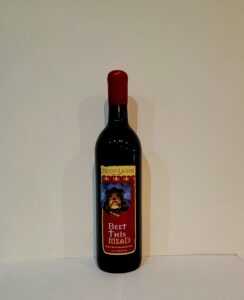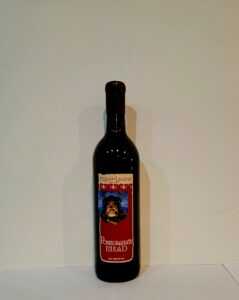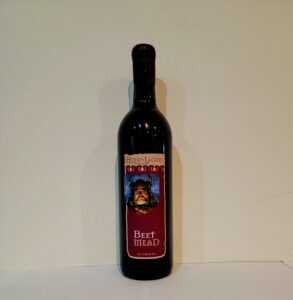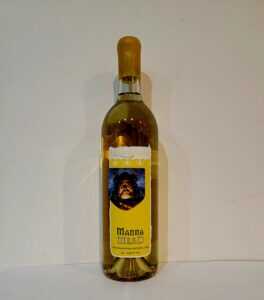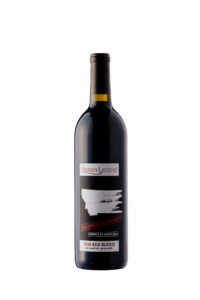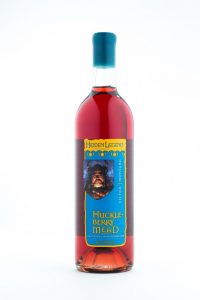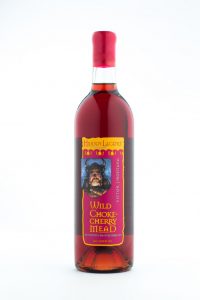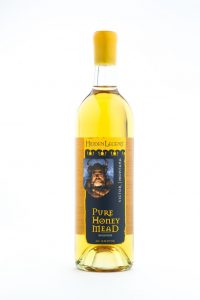
Mead Vs. Beer: Differences in Deliciousness
People who are new to mead often think it’s a type of beer or wine. Easy to confuse them since mead is also known as honey-wine and has plenty in common with beer. You may even come across types of mead that remind you so much of ye ole’ ale that you think it’s a new craft brew. When it comes to mead vs. beer, it’s better to know the differences to better appreciate them.
Mead is older than wine and is tied into ancient religion more than what was thought. Due to the rising popularity of the nectar of the gods, people are looking to get their hands on quality mead and know the ins and outs of the drink itself as well as how to make mead themselves. It’s certainly a renaissance, and the Vikings are likely toasting to our renewed love of mead up in Valhalla.
If you’re interested in becoming a honey wine aficionado or just wanting to know more about mead, read on and discover the many delicious differences between mead vs. beer. Nothing like wetting your whistle with a bit of knowledge before your palette is consumed by the brew the gods preferred.
All Mixed Up
In the mead vs. beer discussion, it’s best to start at the base. While some kinds of mead may remind you of beer, they couldn’t be further apart when it comes to the basic ingredients. There is a reason why mead is referred to as “honey-wine” and that’s because, you guessed it, it’s derived from honey.
Key Ingredients: Honey vs. Barley
The most basic mead is nothing more than fermented honey. All the other flavors are from spices and other ingredients used to create a more dynamic flavor or to make a specific kind of mead. Beer, on the other hand, is derived from fermented barley. Mead fermentation, caused by fermenting honey, is the core difference between mead vs. beer. From their base, they’re wildly different. Can’t get too much farther apart than honey mead and barley alcoholic drinks after all.
The Role of Yeast
Another major difference that people sometimes think is something mead and beer have in common is yeast. There are many different kinds of yeast and champagne, as well as wine, both have yeast as well. So, unless beer, mead, and wine are all the same thing, there must be differences in the yeast as well. It’s pretty easy to spot the kinds of yeast, they’re labeled for what they are used in. You’ll find ale yeast for beer, wine yeasts for wine, and champagne yeasts for champagne; all of these being distinctinctly different alcooholic drinks. So, if you’re looking for how to make mead, pay extra special attention when buying yeast for the mixture.
Crossover Ingredients
There are a lot of wineries and breweries popping up since the roll-back on homebrewing laws and so, you’ll find some meads and beers that cross over when it comes to ingredients. As a general rule of thumb, you won’t find grains in mead while you’ll find tons in beer.
Those aren’t the only differences when digging into what stands between mead vs. beer being the same thing.
Where’s the Sugar?
Sugar is an important part of making any kind of alcoholic beverages. Ever wonder how drinks become alcoholic? Well, for beer and wine and mead, it’s all because of the yeast. See, the yeast is a living organism that loves the sweeter things in life. Whatever source of sugar is used, i.e. grapes for wine, barley for beer, and honey for mead, the yeast eats it. This part may sound a little gross, but it’s true nonetheless. When yeast eats the sugar it…” produces” the alcohol we enjoy.
Yeast’s Role in Flavor and Aroma
Different yeasts provide different aromas and flavors. It should be noted that there has been some successful experimentation amongst meaderies and homebrewers, better to stick with the yeasts labeled for what you’re making. Yeast doesn’t just make your drink alcoholic, it’s a real ingredient that can make or break your mead. Even how much yeast put in has an effect. Too much can have your mead tasting like pure alcohol, and too little will create a very light mead.
The sugar, and therefore the yeast, is another marked difference between mead vs. beer. This helps provide a wildly different taste and smell, a whole different experience when drinking mead. Think about those little miracle creatures that helped give you a good nightcap or toast. Well, not necessarily how they made the alcohol. Oh, don’t worry about drinking them either. They aren’t doomed when imbibed, they’re just traveling to the burp.
Double Bubble, Ferment, and Bottle

One example of the mead vs. beer brewing differences is boiling. Mead isn’t boiled while beer is. See, when making beer the brewer will mix the various grains and spices into a cheesecloth or other contraption to get the flavors into the water. Mead doesn’t have that step. The honey is mixed with water, spices, yeast, and other flavor sources you want to be carried into the mead.
A similarity that beer and mead share is the fermentation process, that’s pretty much it. Before that one commonality beer has a few steps before, only one of which is the boiling previously mentioned. While both mead and beer ferment, their time tables are worlds apart. Beer ferments for a set amount of time before being conditioned in the bottles while mead is put away after fermentation to age. In that respect, mead is a lot more than wine. Some meaderies will let mead age for years!
The Quick Process of Beer vs. the Patience of Mead
It was just mentioned before but deserves to be expanded upon. Beer is fairly quick to make compared to wine or mead. That’s because patience pays off when comparing mead vs. beer. You can age beer, darker beers to be specific, but it doesn’t add too much of a benefit unless it’s one of the beers brewed for aging. Mead, on the other hand, ages like fine wine. Considering that mead is older than wine, that phrase should really change.
Why Aging Mead Is Worth the Wait
There are a few reasons why it’s best to age mead than dive right in. Of course, this only applies if you’re making it, or trying to choose amongst different ages.
1) Complexity
Even if your mead comes out booming with a rich mix of complex flavors and an intricate profile, letting it sit in the dark for six months or more can only make it more so. Not to say that what you’ll open down the road will be a different tasting mead, it’ll be more complex than what you brewed because the mixture has had time to mingle more. You could possibly procure a sweet mead taste or distinctive bitter taste, whichever suits your fancy. Think of aging mead as like a party. You get a good group together that mix well, after a while they’ll be mixing in more complex ways than when first introduced to each other.
2) Clear Views
Ever see beer or mead before it’s bottled? Oh boy, it’s quite a foggy and hazy brew stirring about. When it comes to mead vs. beer, this is a commonality. Both mead and beer become more clear with time, giving the particles and stuff in it a chance to settle in the bottom. It can be a headache when making beer as you don’t want to the stuff at the bottom to start mixing in with the brew again. With mead and it’s aging process, you have less to worry about. In fact, the longer it ages the more clear it becomes. Cloudy or clear is debated amongst brewers, but it’s generally considered that a clear beer or mead is a better beer or mead.
3) Count Your Blessings
Bulk is best for a lot of things and mead is no different. Usually, you’d only hear this perk if looking at homebrewing articles, but it’s also good to know when out shopping for mead. Aging mead gives the brewer consistency if aging a batch altogether. If aging mead of slightly different taste profiles or want to find the sweet aging spot, bulk aging gives them that opportunity.
Understanding the Aging Process of Mead
For those who shop for their mead, looking for an aged mead and how long it’s been aged can tell you quite a bit about what you’re going to taste. Mead that hasn’t been aged too long still carries flavors from the fermentation process, which isn’t the greatest taste in the world. Now, that doesn’t mean that six months is going to taste bad or better than ten years. Taste is a personal thing by and large, after all. It’s just a good rule of thumb to know about.
When out shopping for mead, take a good look at their age, and if you’re making it yourself, make it in bulk for better experimentation.
Mead Vs. Beer Types
Another difference between mead vs. beer is the way they’re categorized. Sure, it’s probably obvious that different drinks would have different categorical styles, but what’s interesting is the standard used between mead vs. beer.
Beer, for example, has primarily two classifications:
- Ale
- Lager
Shocking, isn’t it? Considering all the many kinds of beer available, which only exploded after the laxation of homebrewing laws. It’s the truth though, that out of all those different kinds of delicious beers they fall under two categories. Mead is a little different than that, but let’s break down the beers first.
Yeast Differences in Beer: Ale vs. Lager
In ale, brewers tend to use the saccharomyces cerevisiae yeast. This little bugger floats to the top of the batch is made at warmer temperatures. In lagers, brewers tend to use the saccharomyces pastorianus yeast and that one likes it cold as well as settles to the bottom during fermentation.
Sure, there are sub-types like Indian pale ales, stouts, and pilsners, but they fall under either an ale or lager. For instance, a pilsner is a lager while an IPA is an ale
Classification of Mead
With traditional mead, they’re classified based on ingredients and alcohol as a secondary classifier. Easier to do it that way since mead runs the gamut on things to toss in, and the alcohol can range a great deal.
Hydromel Mead: A Unique Example
For example, a hydromel mead has the lowest alcohol content and is made with fruits and spices. Other meads have these ingredients, but because hydromels have low alcohol content, they’re classified differently.
Spice Up Your Life
While many things make up the conversation around mead vs. beer, there is no real competition. They’re both wonderful drinks for adults to enjoy, make, and give to friends as gifts. They’re simply different in more ways than similar, and each brings unique flavors to the table.
Understanding the differences between mead vs. beer brings a deeper appreciation for the work, styles, and history. It’s carrying on a tradition that the old gods themselves would toast to and our ancestors proud to be brought back in the 21st century. Make sure to try different sorts of meads at different ages, see what flavors taste the best to you and if you take note of why. It’ll be easier to shop for other meads later.
It may even inspire you to try your hand at the nectar of the gods and then, you can play with the mead vs. beer differences. In which case, make sure to check out those other two blogs mentioned earlier. There is a mead that blurs the lines between mead and beer in an interesting way.
Raise your drinking horn and ale mug to a rich history of spirits, brewing, and lively evenings with loved ones.
Our Latest Products

How to Bottle Mead for Aging and Storage
Help Save The Bees By Drinking Mead
